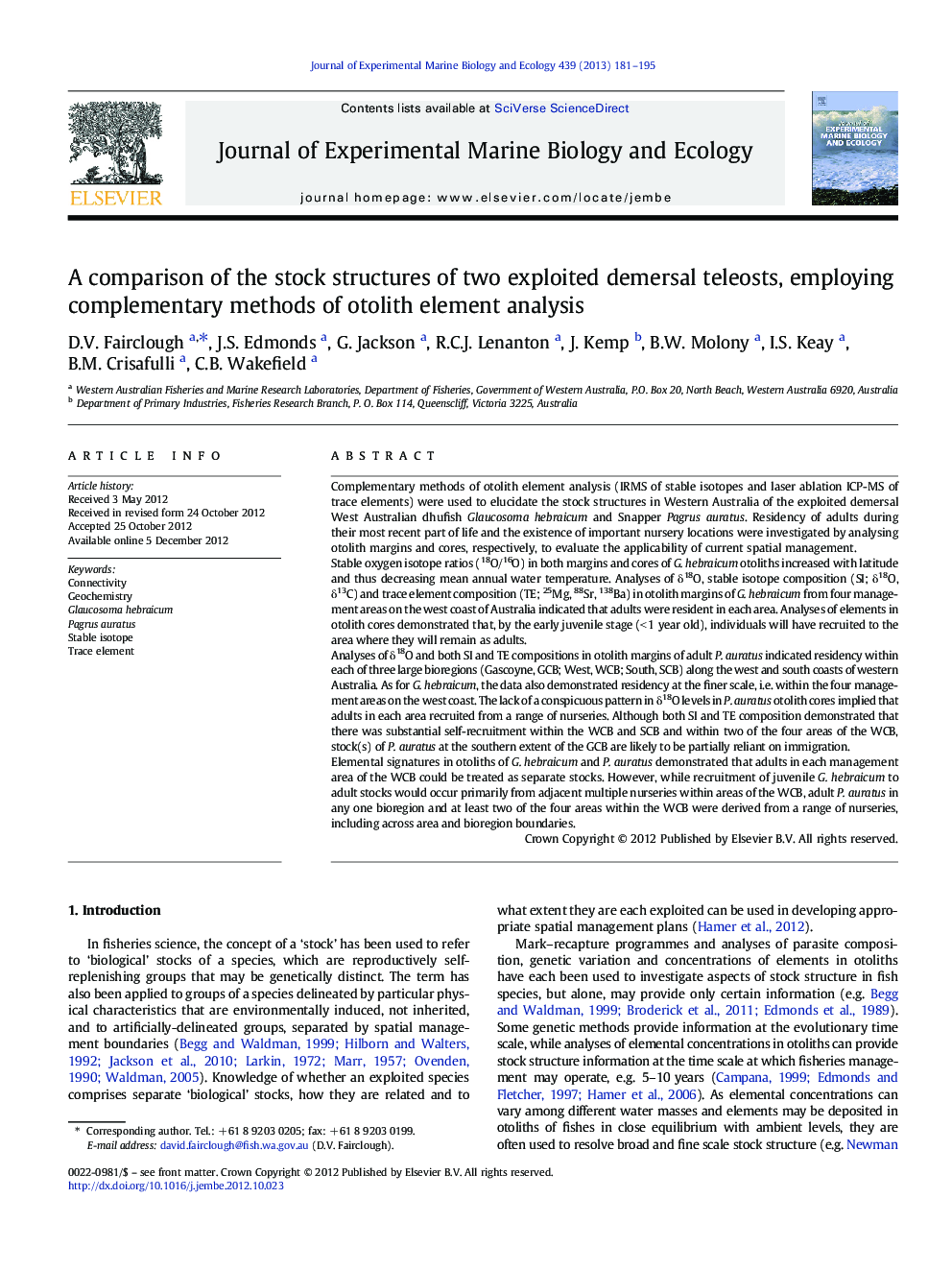| کد مقاله | کد نشریه | سال انتشار | مقاله انگلیسی | نسخه تمام متن |
|---|---|---|---|---|
| 4395895 | 1618436 | 2013 | 15 صفحه PDF | دانلود رایگان |

Complementary methods of otolith element analysis (IRMS of stable isotopes and laser ablation ICP-MS of trace elements) were used to elucidate the stock structures in Western Australia of the exploited demersal West Australian dhufish Glaucosoma hebraicum and Snapper Pagrus auratus. Residency of adults during their most recent part of life and the existence of important nursery locations were investigated by analysing otolith margins and cores, respectively, to evaluate the applicability of current spatial management.Stable oxygen isotope ratios (18O/16O) in both margins and cores of G. hebraicum otoliths increased with latitude and thus decreasing mean annual water temperature. Analyses of δ18O, stable isotope composition (SI; δ18O, δ13C) and trace element composition (TE; 25Mg, 88Sr, 138Ba) in otolith margins of G. hebraicum from four management areas on the west coast of Australia indicated that adults were resident in each area. Analyses of elements in otolith cores demonstrated that, by the early juvenile stage (< 1 year old), individuals will have recruited to the area where they will remain as adults.Analyses of δ18O and both SI and TE compositions in otolith margins of adult P. auratus indicated residency within each of three large bioregions (Gascoyne, GCB; West, WCB; South, SCB) along the west and south coasts of western Australia. As for G. hebraicum, the data also demonstrated residency at the finer scale, i.e. within the four management areas on the west coast. The lack of a conspicuous pattern in δ18O levels in P. auratus otolith cores implied that adults in each area recruited from a range of nurseries. Although both SI and TE composition demonstrated that there was substantial self-recruitment within the WCB and SCB and within two of the four areas of the WCB, stock(s) of P. auratus at the southern extent of the GCB are likely to be partially reliant on immigration.Elemental signatures in otoliths of G. hebraicum and P. auratus demonstrated that adults in each management area of the WCB could be treated as separate stocks. However, while recruitment of juvenile G. hebraicum to adult stocks would occur primarily from adjacent multiple nurseries within areas of the WCB, adult P. auratus in any one bioregion and at least two of the four areas within the WCB were derived from a range of nurseries, including across area and bioregion boundaries.
► Complementary otolith chemistry techniques employed in stock structure analyses.
► Adult Glaucosoma hebraicum and Pagrus auratus remain within management areas.
► Adult G. hebraicum recruit from nurseries within the same management area.
► Adult P. auratus in each area recruit from nurseries in different management areas.
► The relative importance of sources of recruits needs consideration by management.
Journal: Journal of Experimental Marine Biology and Ecology - Volume 439, January 2013, Pages 181–195